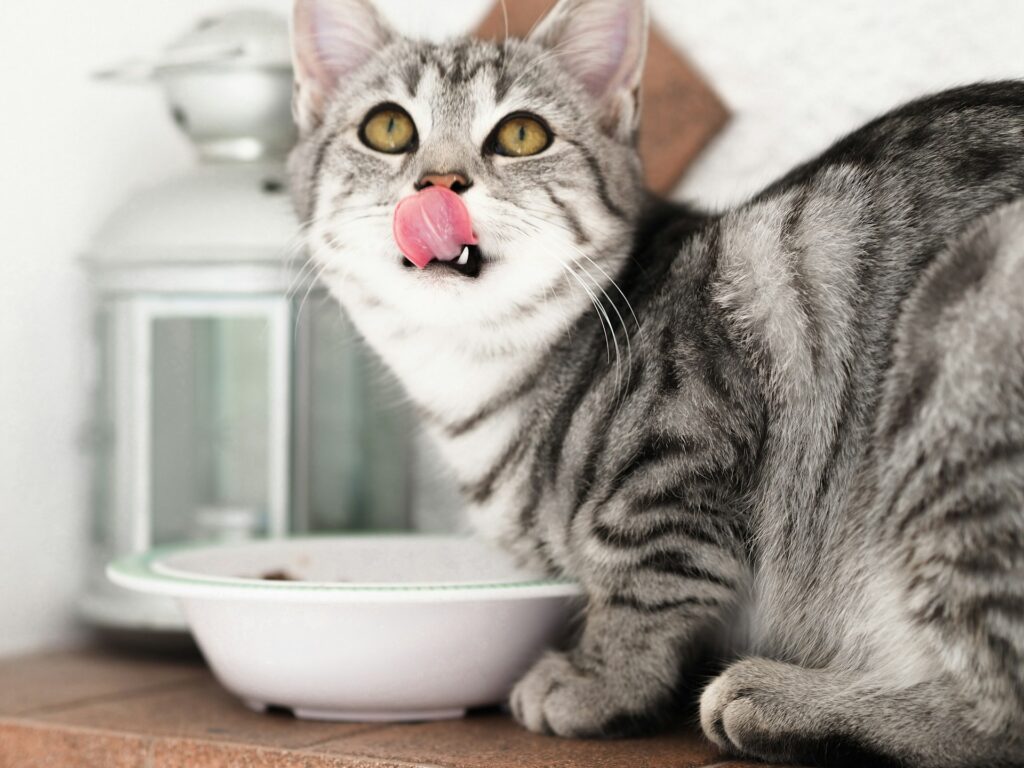It’s no secret our feline friends can be fussy. Add to that the question of whether dry or wet food is better for cats, it can be hard to decide what to feed your feline friend. If dinnertime is a struggle or you just want to make mealtime fun and engaging for your cat, try preparing a special meal for them that utilises both wet and dry cat food.

What is mixed feeding?
Mixed feeding is when you feed your cat dry and wet, fresh, frozen, or raw cat food in one meal. Ideally, every component of your mix is a complete and balanced diet.
What’s the recommended ratio of dry to wet, fresh, frozen, or raw food?
For most cats, 70% dry cat food mixed in with 30% either fresh, frozen, wet or raw cat food is the recommended ratio.

How does feeding wet and dry cat food excite your cat’s senses?
Smell
A cat’s sense of smell is 14 times stronger than our own! Considering this, it’s no surprise that the aroma of food is enticing for cats. Pique their interest with a range of delicious smells to get them running in for dinner.
Taste
Did you know that cats only have around 500 taste buds to our 9000 When it comes to deciding whether or not to try a new food, smell is more important to cats than taste.
However, they will still have their favourite flavours. Mixed feeding is a great way to get your cat to try something new or spoil them with one of their favourite flavours.
Sight
Despite being naturally skilled hunters, cats have relatively poor vision when it comes to things directly in front of them. Don’t worry too much about making something that’s aesthetically pleasing to your eyes. Your cat will love seeing a mix of meat and kibble that smells amazing to their nose.
Sound
Your cat knows the sounds of mealtime. The peeling of a wet food tin. The scrape of a sachet against the edges of the box. The rattle of dry cat food pouring against a bowl. Use the noises of dinner preparation to create an exciting ritual as you prepare their dinner
Touch
There are three ways you can use touch to enhance your cat’s meal: food texture, food temperature, and whisker feel.
By mixing dry and wet cat food, you’re creating an interesting mix of textures. Crunchy dry cat food contrasts well with all the different types of wet cat food. Chewy meat pieces in jelly or gravy, smooth pate, shreds of meat – there are so many options to make every bowl unique and interesting.
Make your cat’s dinner even more enticing by changing the temperature of the food. As a hunter, cats prefer food that is warm. Warm food also enhances smell. Combine their dried food with gently warmed up canned, rolled or frozen food for a delighted kitty. Take care not to overheat your cat’s food as excessive heat can change the nutritional value.
Cat’s whiskers are extremely sensitive. If they seem reluctant to eat, it may be because their whiskers are brushing against a deep, narrow bowl. Try feeding them a special meal on a shallow bowl or plate.

Foods to avoid when building your cat’s bowl
While we celebrate creativity, it’s also a timely reminder of the foods to never feed your cat include, but are not limited to:
- Foods containing caffeine
- Chocolate
- Dog food
- Yeast or raw dough
- Onions
- Chives
- Garlic
- Alcohol
- Grapes and raisins
- Gat trimmings
- Bones,
- Citrus fruits
By adding more variety to your pet’s bowl you’re activating their senses and making feeding time more enjoyable and satisfying. What’s good for you isn’t always good for your pet though, so before you start thinking of feeding them last’s nights leftovers or all organic produce, it’s important to understand how to mix up the menu and build a bowl that’s safe, nutritional, and exciting for your cat.

